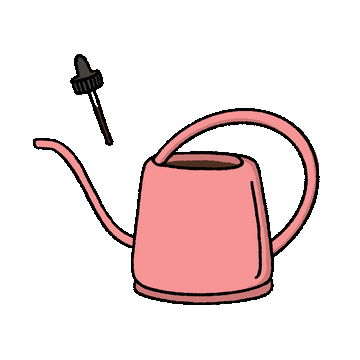Here's one we get asked all the time.
The leaves on your plants are starting to turn a little brown and you're not sure why. Truth is, there are many reasons why your leaves might be going brown and there are just as many ways for them to do so! This post is going to cover some of the more common ones.
The big thing to remember is that our 'indoor plants' are not meant to be, well, indoors. They require a certain amount of light, nutrients, humidity and water that they get in their natural environment but when we move them indoors its up to us to replicate it.
Leaves browning is generally the result of them being in an unnatural environment, which means its usually an easy remedy. When the leaves start to brown, have a think about your plant care routine and see what the plant might be missing out on (or getting too much of).
Also, once the leaves go brown, there's no coming back. Prune them off or trim out the brown parts if it really bothers you, but don't hold out for it to go green again!
Top 6 reasons why your indoor plants are turning brown
1. They're getting old
Many plants have leaves that turn brown then drop off as they grow or mature. Think Ferns like Boston or Asplenium, or Philodendrons like Congos or Xanadus. These leaves will be the older leaves on the plant (so below the new growth) and they'll brown off then drop away. If this is the case, don't freak out its just natural.
Our Fix: Prune them away if its really bothering you - this will save picking them up off the floor at a later date.
2. They're getting dry
Remember what I said about plants not meant to be indoors? Most plants which we refer to as indoor plants are often tropical which means they love warm, humid environments. When the air is too dry (which is super common especially around winter when the heaters go on!) some plants' leaves will start to brown up and go crispy..
Our Fix: Get that humidity up! Think about introducing a pebble tray (literally a tray with pebbles in it that the plant sits on top of. Fill the tray with water and make sure the base of the pot isn't touching the water) underneath your plants, or even purchasing a humidifier. We discussed this a little further here in our Preparing Your Plants for Winter blog.
3. They're not getting enough water
If your plant is drying up from the stem out toward the leaf, it could be a case of under watering. TBH this should be an easy one to diagnose - just stick your finger in the potting mix. If its dry and the leaves are going brown - its a case of under watering. Under watering starts with the lower leaves first then works its way up the plant.
Our Fix: Get a moisture meter to help stay on top of your plants water needs. Its pretty easy to get into a routine with watering - after all you'll be doing it enough. The tricky time is around the seasonal changes. Heaters go on or the Sun gets higher...little factors that can have a big impact on your plants water uptake. Moisture meters are definitely not something you should solely rely on, but they can be a big help.
4. They're getting too much water
Same symptoms as above, the only difference being the potting medium will be very damp.
Our Fix: Hold back on the watering and let the medium dry out before the next drink. Reduce how much water you're giving the plant and check the potting medium regularly until you're sure you're back on track.
5. They're getting too much fertiliser
Remember to adjust your feeding program over the winter months. Plants that have been fertilised on a regular basis over Spring and Summer need little to no fertiliser over winter. Too much will have an impact on the plants ability to draw up moisture and can cause leaf burn or signs of under watering.
Our Fix: Reduce your feeding over the cooler months.
6. They're getting a pest problem
Brown spots on the plant are often caused by pests and diseases. We've covered this before on an earlier blog post, here. Keep an eye on your plants and check them regularly for any signs of fungal infections or pests like mealy bugs and spidermites.
Our Fix: Always quarantine an infected plant until the problem is resolved. There are a number of different approaches to pest and diseases in plants so have a read of our Pests and Diseases blog post and apply the remedy that suits!
Finally, always remember your plants are living things and just like us they can bruise up. No plant is perfect so don't freak out if there is a brown spot here and there.



1 comment
Hello I just purchased some plant runner liquid fertiliser to try I want to use in my peace Lilly hydroponic vase it says 1ml to one lire of water would this be to strong to use in a plant that grows in water please
Kind regards
Sheryl
Leave a comment